How to Start a WordPress Blog from Scratch (Within 30 min.)

Blogging has become a powerful medium for sharing ideas, building an online presence, and even making a living. With millions of blogs on the internet, it’s essential to choose a robust and versatile platform. WordPress stands out as a popular choice due to its user-friendly interface, extensive customization options, and strong community support.
This guide is designed for beginners who want to start their own WordPress blog. We’ll cover everything from understanding WordPress to promoting your blog effectively.
Getting to know WordPress.com and WordPress.org
WordPress is a free and open-source content management system (CMS) that powers 43.01% of all websites worldwide. There are two versions of WordPress: WordPress.com and WordPress.org. WordPress.com is a hosted solution where the platform handles the technical aspects, while WordPress.org is self-hosted, giving you full control over your website.WordPress.org is often preferred by serious bloggers due to its flexibility and extensive customization options. With WordPress.org, you can choose your own hosting provider, install plugins, and modify your site’s code.
Initial Setup for WordPress Blog Website
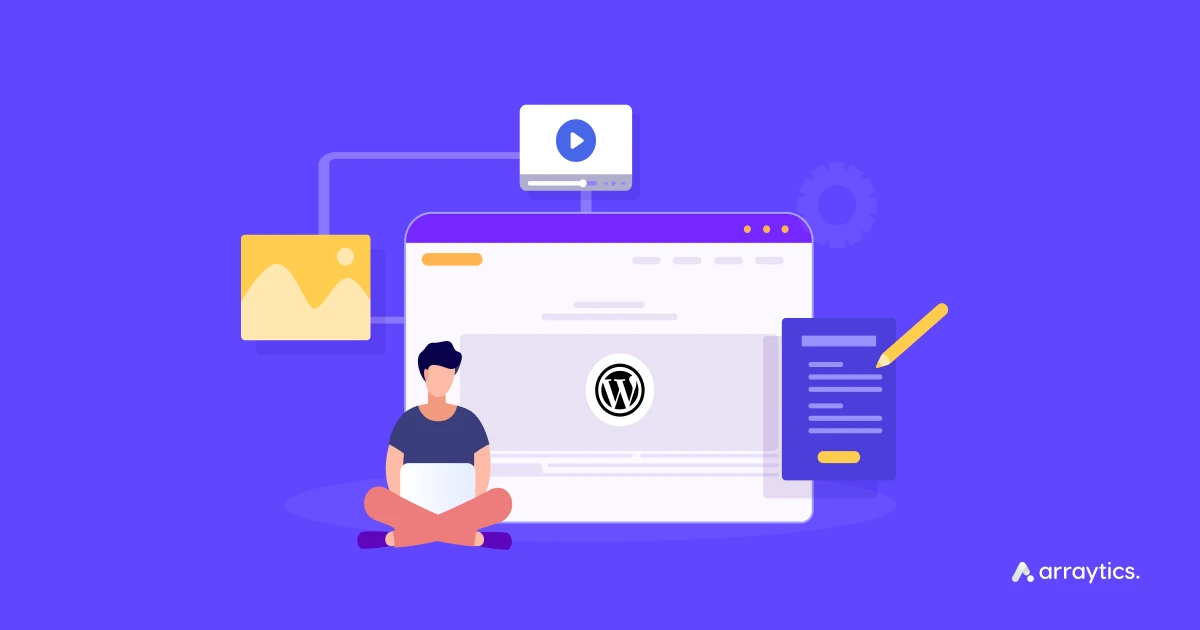
When creating a WordPress blog website, it’s essential to consider the initial setup, configurations, and necessary plugins to establish a strong foundation for your blogging journey. Please take a moment to review this section and apply all the recommendations before creating a blog on WordPress.
Setting Up Your WordPress Website
➡️ Choose a Domain Name and Hosting Provider: (you can skip if you already have).
- Your domain name is the address of your website (for example, www.yourblogname.com). Choose a domain name that’s easy to remember, easy to spell, and reflects the content of your blog.
- Select a reliable WordPress hosting provider. It is important to choose a reliable hosting provider. Some of the most popular choices are Bluehost, Hostinger, SiteGround, and HostGator. Many of these providers offer one-click WordPress installations.
➡️ Install WordPress:
- Most hosting providers offer an easy, one-click WordPress installation method. Follow their instructions to install WordPress on your preferred domain.
➡️ Configure Basic Settings:
- Sign in to your WordPress account after setting up. Under the “Settings” tab, you can change simple things like your site’s title, tagline, and time zone.
➡️ Choose a WordPress Blog Theme:
Theme sets the visual tone and overall user experience. With thousands of free and paid options available on WordPress, you can find a theme that perfectly matches your style and blog’s niche.
- Head over to Appearance> Themes > Add New Theme in your WordPress dashboard to explore and activate your ideal theme.
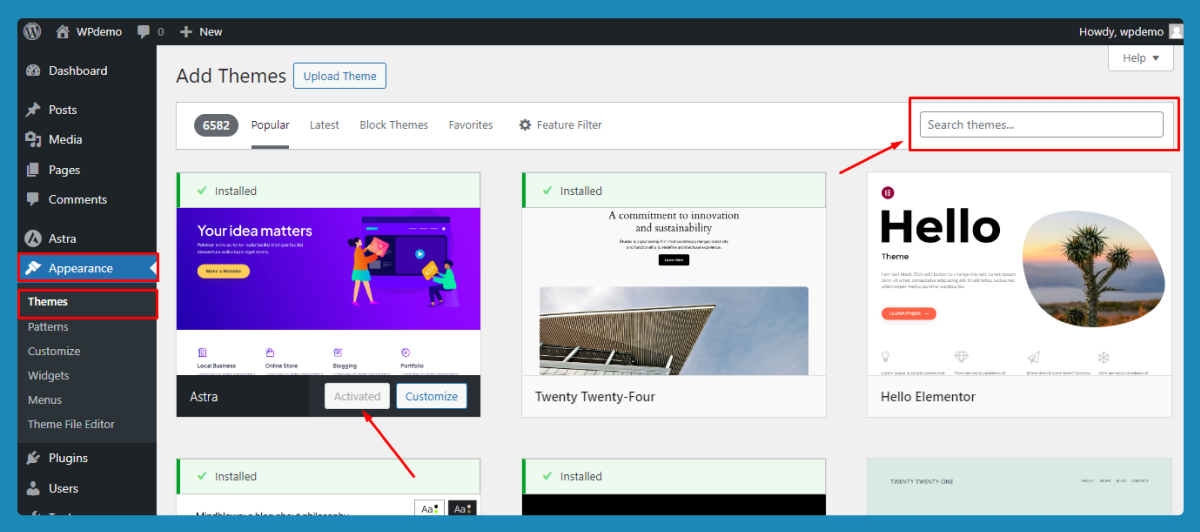
Essential Plugins for WordPress Blogs
Plugins are tools that add functionality to your WordPress site. Here are some essential plugins for any blog:
- Yoast SEO: Assists in optimizing your content for search engines.
- Akismet Anti-Spam: Safeguards your blog from spam comments.
- Jetpack: Provides functions such as site analytics, security, and performance improvements.
- WPForms: Permits easy creation of contact forms.
- UpdraftPlus: Supplies automated site backups.
Start Creating a Blog on a WordPress Website

WordPress is a versatile platform that allows you to create a wide variety of content. It provides the flexibility to create both static pages and dynamic posts.
Pages in WordPress are designed for static content, such as your “About” and “Contact” pages. These are generally used for information that doesn’t frequently change and serves as a reference for your website visitors.
On the other hand, posts are used for dynamic content, such as blogs, articles, news updates, and regular content updates. Posts are usually sorted by date and category and displayed with the newest ones first.
👉 Creating a WordPress Page and Post
To create a new page, you can access the “Pages” > “Add New” section in your WordPress dashboard. This allows you to easily create and manage different types of content for your website.
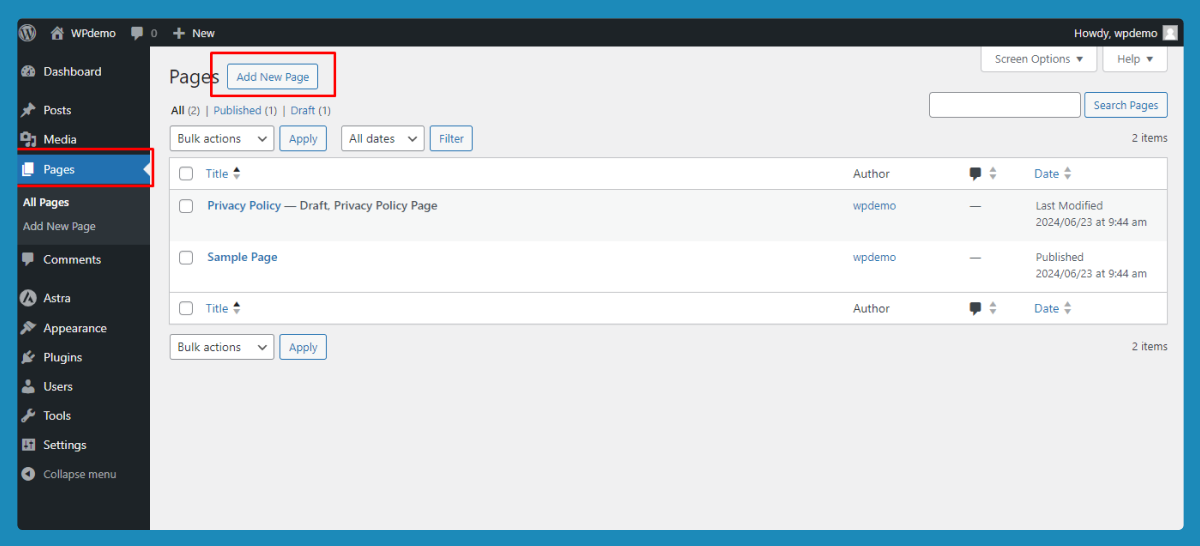
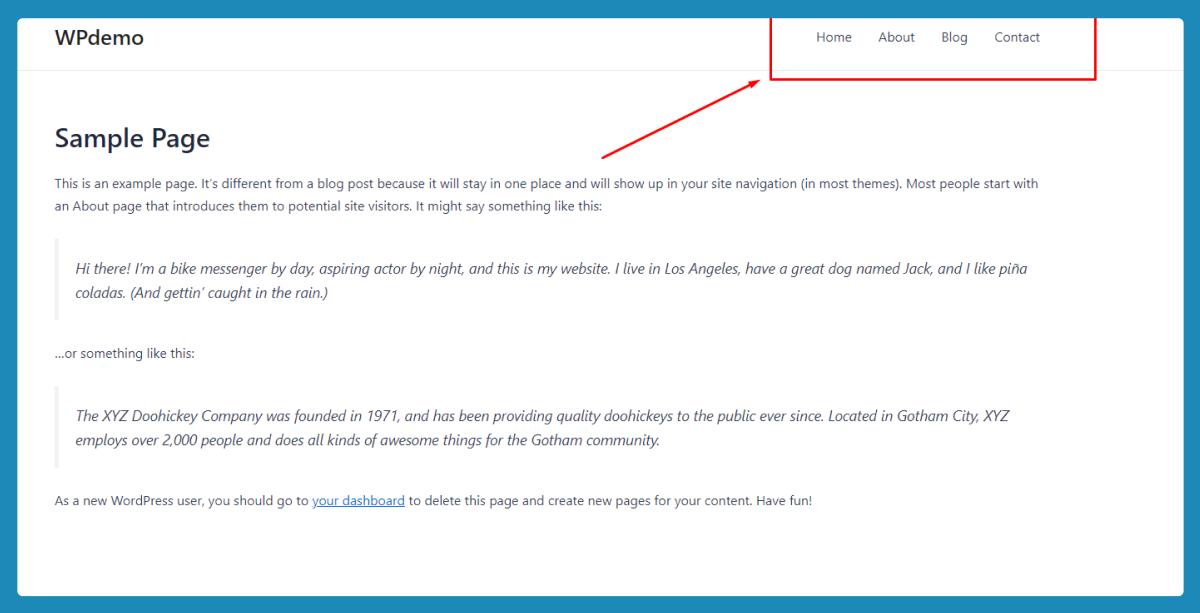
Similarly, to create a new blog post, navigate to Posts > Add New, provide a title for your blog, and begin writing. After that, don’t forget to publish.
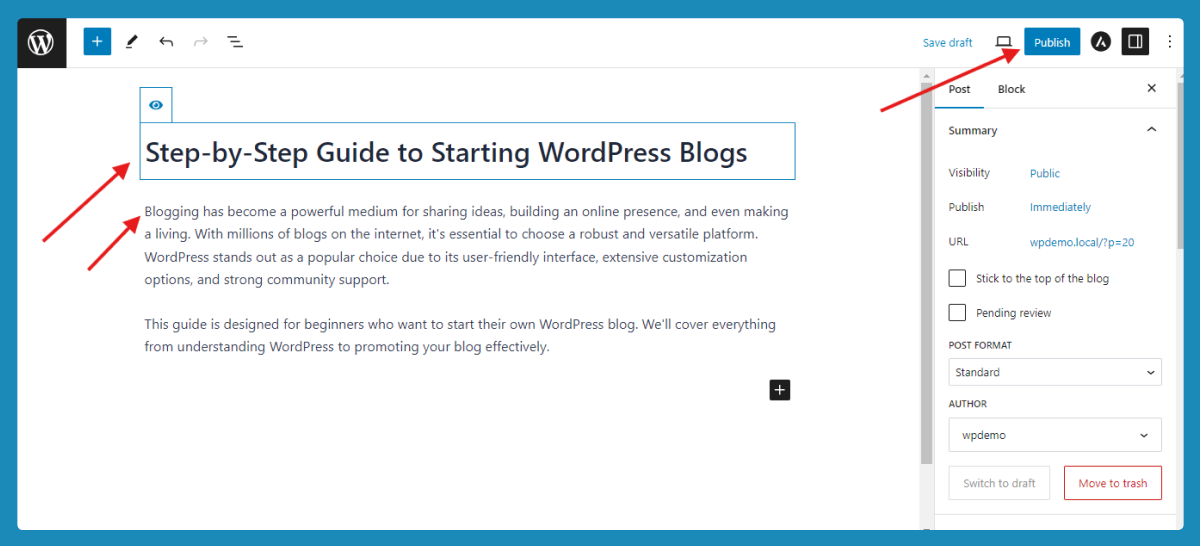
- Choose a Compelling Title: Your title should be catchy and include relevant keywords.
- Write Engaging Content: Provide value to your readers with informative and engaging content. Break your text into short paragraphs and use subheadings for better readability.
- Use Images and Media: Enhance your posts with images, videos, and other media. Ensure they are high-quality and relevant.
- Edit and Proofread: Always proofread your content before publishing to avoid typos and grammatical errors.
👉 Customizing Your Blog Post
After creating a page and posting your blog content, your blog post is ready. Now, define all your blog posts to appear on the “Blog” page. When you create a new blog post, it will automatically show on the Blog page. To do this, go to Settings > Reading > Posts page > Blog and save changes.
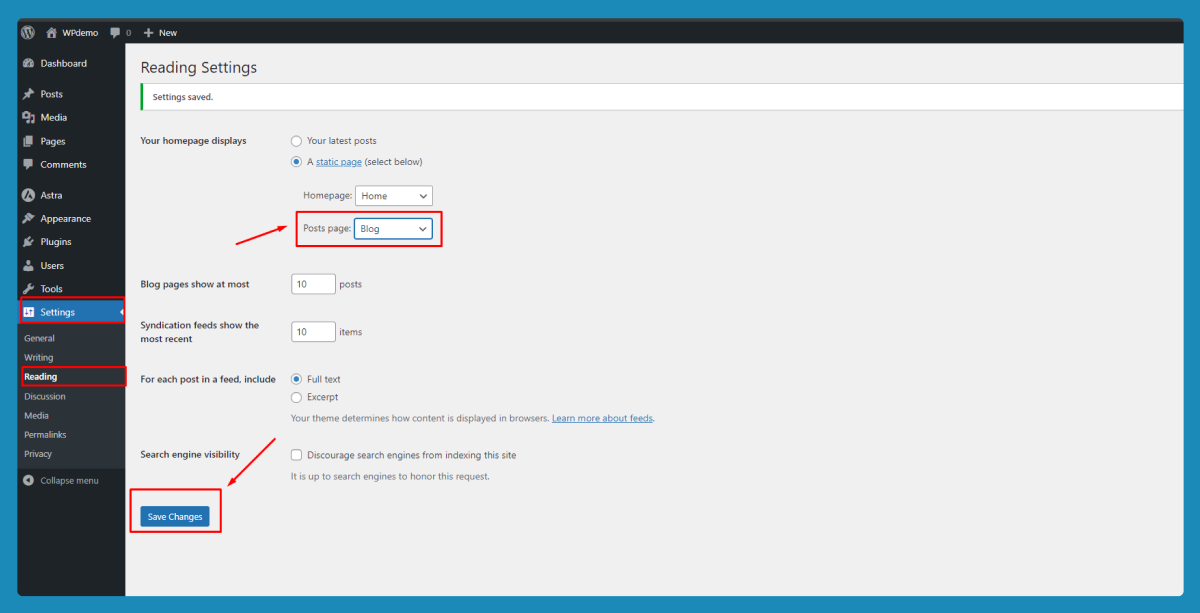
If you have completed all the above steps, your blog is ready for your audience, and you will see this type of blog view on WordPress.
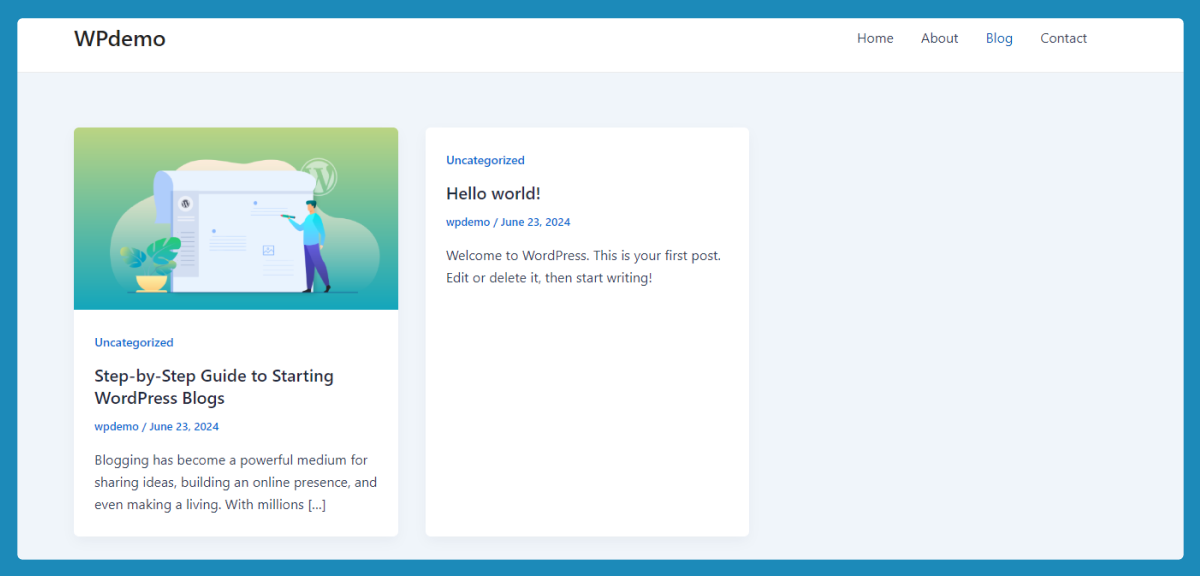
Tips and Hacks to Optimizing Blog on WordPress
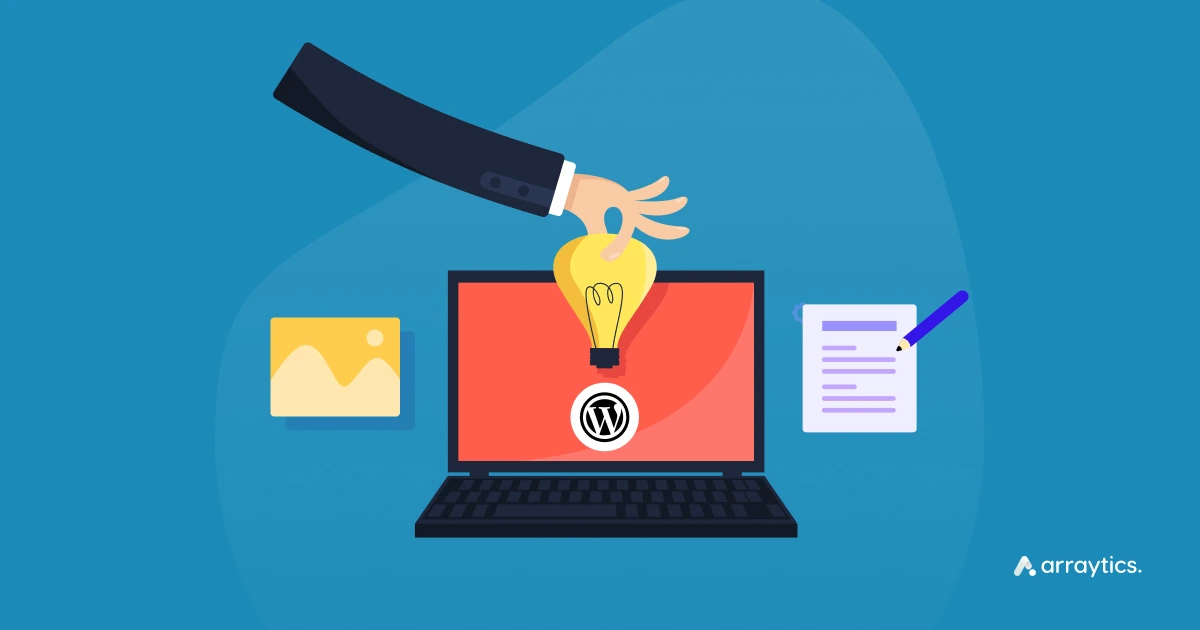
🚀 Optimizing Content for SEO
- Keyword Research: Utilize tools such as Google Keyword Planner and Ahrefs to discover appropriate keywords for your specific industry or topic.
- On-Page SEO: Enhance your content by integrating keywords into the title, headings, and body. Additionally, incorporate meta descriptions and alt text for images.
- Internal Linking: Establish links to other relevant articles within your blog to enhance site navigation and SEO.
- Fast Loading Speed: Implement caching plugins like W3 Total Cache and optimize your images to boost site speed.
- Mobile-Friendly Design: Confirm that your theme is responsive and visually appealing on all devices.
🚀 Promoting Your WordPress Blog
- Social Media: Utilize social media platforms such as Facebook, Twitter, and Instagram to share your posts. Interact with your audience and become part of relevant groups and communities.
- Email Marketing: Create an email list and send out newsletters to your subscribers. Incorporate plugins like MailChimp for seamless integration.
- Guest Blogging: Contribute guest posts to other blogs within your niche in order to expand your reach and establish backlinks.
- Collaborations: Engage in partnerships with other bloggers and influencers in your niche to mutually promote each other.
- SEO and Paid Advertising: Allocate resources to enhance your organic reach through SEO. Explore options for paid advertising such as Google Ads and Facebook Ads to achieve faster results.
➡️Read also: How to Increase Blog Traffic
🚀 Keeping Your WordPress Blog Secure
- Use Strong Passwords: Create complex, unique passwords for your WordPress admin and hosting accounts.
- Keep WordPress Updated: Keep WordPress themes and plugins updated regularly to address security flaws.
- Install Security Plugins: Utilize security plugins such as Wordfence to monitor and safeguard your site.
- Backup Regularly: Regularly schedule backups of your site.
- Limit Login Attempts: Use a plugin to limit the number of login attempts.
Wrapping Up
Starting and managing a WordPress blog can be an absolutely fantastic experience. Understand the basics of WordPress; set up your blog correctly, make it work at its best; optimize content for SEO; and be able to run a successful and engaging blog. Promote it through different channels, monetize your efforts, but more importantly, pay attention to security. Your WordPress blog will become a powerful platform to express your ideas and connect with a global audience.



